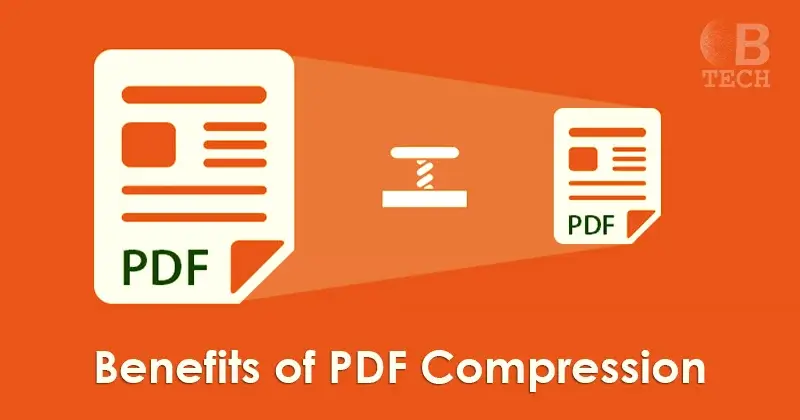In today’s fast-paced digital world, the need for efficient and effective file management has become a top priority for individuals and businesses alike. With the increasing volume of documents being shared and stored online, the size of these files has also grown, leading to challenges in terms of storage space, data transfer, and overall document management. This is where PDF compression comes in as a valuable solution. PDF compression refers to the process of reducing the size of a PDF file while maintaining its quality and functionality. While this technology has been around for quite some time, its practical benefits have become even more significant in recent years. The PDF compressor efficiently reduces file size without compromising quality, making document sharing and storage more convenient and efficient. In this article, we will delve into the practical benefits of PDF compression and how it can improve file management for individuals and businesses. From faster data transfer to cost savings, the advantages of PDF compression make it a must-have tool for anyone dealing with large PDF files. So, let us explore the practical benefits of PDF compression and how it can revolutionize the way we manage our digital documents.
Optimize file size for storage
In today’s digital world, where information is constantly being created and shared, optimizing file size for storage has become an essential practice. By reducing the size of files, such as documents, images, and videos, businesses and individuals can save valuable storage space and improve overall efficiency. Smaller file sizes not only allow for more data to be stored in a limited amount of space, but also contribute to faster file transfers and improved accessibility. Additionally, optimizing file size can have a positive impact on network bandwidth, reducing the time and resources required for data transmission. With the increasing reliance on digital storage solutions, optimizing file size for storage has become a practical necessity for maintaining an organized and optimized digital workflow.
Increase efficiency and productivity
In addition to optimizing file size for storage, implementing strategies to increase efficiency and productivity can further enhance digital workflows. By streamlining processes and utilizing tools that automate repetitive tasks, businesses can save valuable time and resources. Through the use of project management software, collaboration tools, and cloud-based solutions, teams can effectively communicate, coordinate, and complete tasks in a more efficient manner. Moreover, establishing clear goals, setting priorities, and implementing effective time management techniques can help individuals stay focused and maximize their productivity. By embracing these strategies, businesses and individuals can unlock their full potential and achieve greater levels of efficiency and productivity in their digital operations.
Save time on file transfers
In today’s fast-paced digital landscape, time is a valuable commodity that businesses and individuals strive to optimize. One area where significant time savings can be achieved is in the realm of file transfers. Traditional methods of sharing large files, such as email attachments or physical storage devices, can be slow and cumbersome. However, by leveraging modern technologies and solutions, such as cloud-based file transfer platforms or peer-to-peer file sharing protocols, the process can be expedited, allowing for seamless and efficient transfers. With faster upload and download speeds, simplified sharing options, and robust security measures, these tools enable users to save precious time that can be redirected towards more productive endeavors. Whether it’s collaborating on important projects, sharing critical documents, or simply streamlining workflows, the ability to save time on file transfers has become an essential aspect of modern digital operations.
Improve compatibility with software
In addition to optimizing file transfer speeds, another practical benefit of PDF compression is the improvement of compatibility with various software applications. When working with large PDF files, compatibility issues can arise, especially when trying to open or edit these files on different devices or software programs. By compressing PDF files, the overall file size is reduced, making it easier to open and manipulate the document on different platforms. This enhanced compatibility ensures that colleagues, clients, or partners can access and work with the PDF file without any limitations or disruptions. Whether it’s sharing important reports, presentations, or contracts, the ability to achieve seamless compatibility with software applications enhances productivity and streamlines collaboration processes.
Preserve document quality
Preserving the quality of documents is an essential aspect of PDF compression that offers practical benefits across various professional settings. When compressing PDF files, it is crucial to strike the right balance between file size reduction and maintaining the integrity of the content. By utilizing advanced compression algorithms, PDF compression tools can effectively reduce the size of documents without compromising the visual fidelity, readability, or overall quality. This ensures that important details, such as images, graphs, and text formatting, are preserved, allowing recipients to view and analyze the document as intended. Whether it is sharing visually rich presentations, intricate design files, or complex reports, the ability to preserve document quality through PDF compression guarantees that professionals can transmit and receive information accurately and efficiently.
Conclusion
The benefits of PDF compression are numerous and undeniable. From increased storage space and faster file transfers to improved document accessibility and reduced costs, the practical advantages of compressing PDF files cannot be overstated. Whether for personal or professional use, implementing PDF compression can greatly enhance efficiency and productivity in handling digital documents. With the various compression tools and techniques available, it is a simple and worthwhile solution for any individual or organization looking to optimize their PDF files.
Also Read: Transform Your Bank Exam Prep: Top-Tier Quantitative Aptitude PDFs!



